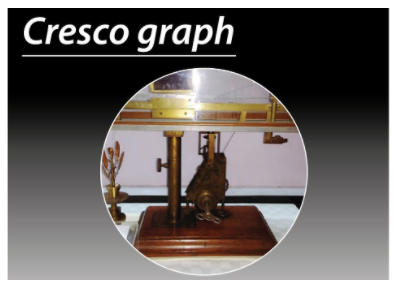
Which of the following instruments can be used to record plant growth by seconds, i.e., in a fraction of a minute?
(a)Porometer
(b)Potometer
(c)Cresco graph
(d)Pressure bomb
Answer
576.3k+ views
Hint: The device was invented in the early 20th century by Sir Jagadish Chandra Bose- an Indian polymath, physicist, biologist, botanist, and archaeologist. He used a series of clockwork gears and a smoked glass plate to record the movement of the tip of the plant.
Complete answer:
Bose invented a highly sensitive instrument that is called Crecograph which is used for the detection of minute response by the living organisms to external stimuli enabled him to anticipate the parallelism between animal and plant tissues noted later by him.
Additional Information: -It was able to record at a magnification of up to 10,000 times through the use of two levers.
-Marks were made on the plate at intervals of a few seconds, demonstrating how the rate of growth varies under varying stimuli.
-Later on, the electronic Cresco graph plant movement detector is capable of measurement as small as 1/1,000,000 of an inch.
-To adjust and calibrate the movement a micrometer is used.
-Poromoeter is the chamber that constitutes dry air and helps in the measurement of humidity, radiation, and the rate of transpiration along with the functioning of the stomata conductance.
-Potometer is also known as a transpirometer that helps in the measurement of the water loss through transpiration.
-A pressure bomb is a device that is used to measure the water potential of the plant tissues.

So, The correct option is ‘C’.
Note: His books include Response in the Living and Nonliving (1902) and The Nervous Mechanism of Plants (1926).
To help his research, he constructed automatic recorders capable of registering extremely slight movements; these instruments produce some striking results, like a demonstration of an apparent power of feeling in plants, as exemplified by the quivering of the injured plant.
Complete answer:
Bose invented a highly sensitive instrument that is called Crecograph which is used for the detection of minute response by the living organisms to external stimuli enabled him to anticipate the parallelism between animal and plant tissues noted later by him.
Additional Information: -It was able to record at a magnification of up to 10,000 times through the use of two levers.
-Marks were made on the plate at intervals of a few seconds, demonstrating how the rate of growth varies under varying stimuli.
-Later on, the electronic Cresco graph plant movement detector is capable of measurement as small as 1/1,000,000 of an inch.
-To adjust and calibrate the movement a micrometer is used.
-Poromoeter is the chamber that constitutes dry air and helps in the measurement of humidity, radiation, and the rate of transpiration along with the functioning of the stomata conductance.
-Potometer is also known as a transpirometer that helps in the measurement of the water loss through transpiration.
-A pressure bomb is a device that is used to measure the water potential of the plant tissues.

So, The correct option is ‘C’.
Note: His books include Response in the Living and Nonliving (1902) and The Nervous Mechanism of Plants (1926).
To help his research, he constructed automatic recorders capable of registering extremely slight movements; these instruments produce some striking results, like a demonstration of an apparent power of feeling in plants, as exemplified by the quivering of the injured plant.
Recently Updated Pages
Master Class 12 Economics: Engaging Questions & Answers for Success

Master Class 12 Maths: Engaging Questions & Answers for Success

Master Class 12 Biology: Engaging Questions & Answers for Success

Master Class 12 Physics: Engaging Questions & Answers for Success

Master Class 8 Maths: Engaging Questions & Answers for Success

Class 8 Question and Answer - Your Ultimate Solutions Guide

Trending doubts
What is meant by exothermic and endothermic reactions class 11 chemistry CBSE

10 examples of friction in our daily life

One Metric ton is equal to kg A 10000 B 1000 C 100 class 11 physics CBSE

1 Quintal is equal to a 110 kg b 10 kg c 100kg d 1000 class 11 physics CBSE

Difference Between Prokaryotic Cells and Eukaryotic Cells

What are Quantum numbers Explain the quantum number class 11 chemistry CBSE




